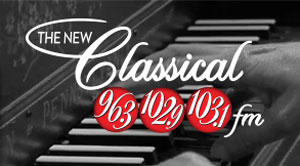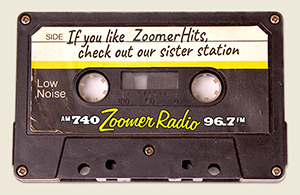Summer in France
Reviewed by Marc Glassman
Summer in France
TIFF Cinematheque’s survey of classic French cinema
Continues to Sept. 2 at Bell Lightbox
Reitman Square—350 King Street West—(416) 599-TIFF
Curated by James Quandt
With Summer in France, TIFF’s Cinematheque’s senior programmer James Quandt has curated a wonderful programme of French films from the ‘30s to the ‘90s. If there’s a problem reviewing Quandt’s selections, it’s because the words “classic,” “masterpiece,” “immortal”, “stylish” and “brilliant” tend to get overused–and they’re the appropriate terms for many of the films. To compare this series to classical music, it would be like reviewing the finest of Mozart, Beethoven and Bach with some Schubert and Schumann thrown in and—not forgetting modernity—adding in Bartok and Shostakovich. Where do you start?
Before launching into a bit of a history of French cinema, let’s just name the films that can be labeled “must-sees”: Diabolique, Les enfants du paradis, Le plaisir, Les quatre cent coups (The 400 Blows), Belle de jour, Jules et Jim, Le feu follet, A bout de soufflé (Breathless), Vivre sa vie, Pierrot le fou, Weekend, L’annee dernier a Marienbad (Last Year at Marienbad), Les parapluies de Cherbourg, Cleo de 5 a 7, La Jetee, Sans Soleil, La maman et la putain, Playtime. That’s 18 films, which any lover of cinema should see at least once in their lives.
Why is French cinematic history so rich? It may be that the culture and society was right for it; after all, why did opera blossom in Italy? In both cases, one can claim that the form originates there—although other nations may make their own assertions. What is clear is that cinema begins quite early in France—and quite significantly—with the creation of opposite poles of film: the documentaries of the Lumiere Brothers and the fantasy films of George Melies. The French embraced cinema, constructing theatres and a star system throughout the first decades of the 20th century but so did many other nations.
In France, though, important critics and artists embraced film as an art form. While Hollywood created a studio system that mostly ignored directors, the French were always willing to talk and write about certain filmmakers: Abel Gance (and his epic Napoleon) in the ‘20s, Rene Clair with his elegant comedies in the early ‘30s, Marcel Carne and writer Jacques Prevert’s moody norish dramas in the late ’30 and early ‘40s. France had a commercial cinema, of course, but artists were always held in high regard.
So it’s no surprise that the auteur theory was born in France in the 1950s. Auteur, of course, means author and it was the young Francois Truffaut who proposed that the history of cinema could be read through the work of the artists who created them, the directors. The theory spread like wildfire, helping to start film studies programmes around the world. But auteurism—since widely disputed—also had practical consequences in France.
By 1959, Truffaut and his colleagues Jean-Luc Godard and Claude Chabrol were directing extraordinary feature films, supported by producers who embraced the idea of working with rising young stars. So was born the La nouvelle vague (the New Wave) with its quicksilver rhythms, jazz soundtracks and “beat” characters. And it being France, an opposite school had to emerge, with the so-called Right Bank filmmakers Alain Resnais, Chris Marker and Agnes Varda, the makers of a more literary and highly structured cinema. From the Left Bank came Truffaut’s celebrated ménage a trois film Jules et Jim (with the young and beautiful Jeanne Moreau as Catherine), Godard’s existential noir thriller A bout de soufflé which made Jean-Paul Belmondo a star; from the Right came Resnais’ elegant and romantic film about desire and memory Last Year at Marienbad, Varda’s poignant study of young woman who might be pregnant, Cleo from 5 to 7 and Marker’s profound essay about the search for meaning in life, Sans Soleil.
Summer in France offers these and a host of other delights. It goes backwards from the New Wave to showcase classics by auteurs like Jean Renoir and Jean-Pierre Melville and moves forward to embrace more modern artists like Maurice Pialat but it does concentrate on the ‘60s, a marvelous time for cinema. I urge you to spend part of your summer enjoying these films at TIFF’s Bell Lightbox.














